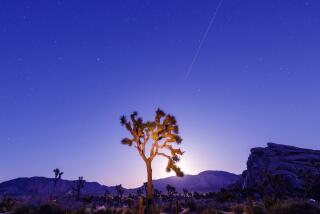Solar eclipse coming Nov. 3: How you can help schoolchildren see it
On Nov. 3, the moon will once again pass between the Earth and the sun, partially blocking out our life-giving star and putting on a spectacular celestial show for people who are in the right place to see it.
And this year, the best place to see the eclipse is in Africa.
“In this very narrow path across Africa there will be a total eclipse, when the moon covers the sun completely, darkness descends and the stars come out,” said Mike Simmons, founder and president of a group called Astronomers Without Borders. “But in every other place of Africa beyond that narrow band of totality, everyone will see a partial eclipse.”
To help children across the continent watch the eclipse safely, Simmons and other members of Astronomers Without Borders began a campaign to get eclipse glasses on the faces of as many African kids as possible.
(As most of us learned in elementary school, it is dangerous to look directly at the sun without the aid of a solar filter to block the sun’s harmful rays.)
It costs $1 to send one pair of those cardboard framed glasses to Africa, and donations have been collected through the Astronomers Without Borders website. The group’s goal is to raise enough money to send 41,800 pairs of glasses to the continent, but so far, it has collected only enough money to send about 10,000 pairs.
The glasses will be transported by a network of astronomers headed to Africa to witness the eclipse and distributed by the South Africa-based International Astronomical Union’s office of Astronomy for Development.
Astronomers Without Borders was founded in 2007 with the mission of connecting people around the world through astronomy. So far, most of the group’s work has focused on sharing information digitally, and in helping amateur astronomers connect with one another. But Simmons said he hoped to do more projects like this one.
“Astronomy is a gateway science,” he said. “It is more accessible than most sciences because you have the laboratory overhead.”
Share the astronomy love! Follow me on Twitter for more stories like this.
ALSO:
A fossilized brain, 520 million years old
An alien world dripping with water? Scientists see possibility of life
Don’t mourn comet ISON yet: Sun-grazer may well survive, experts say







